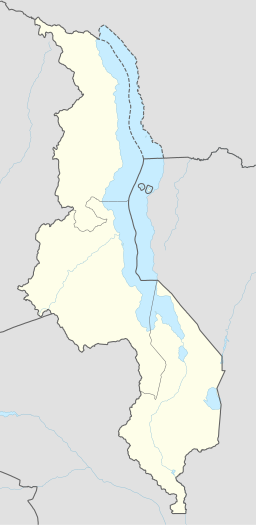Malawi Military Power Ranking 2025
MPR Rank: 146th
MPR SCORE: 196
MPR Index: 0.0428 (1.0000 is perfect)
Reverse MPR Index: 0.9071 (0.0000 is perfect)
Z Score: -0.668 (standard deviations above the mean)
Overview
Malawi ranks 146th in the 2025 Military Power Rankings. The Malawi Defence Force (MDF) is structured primarily for internal stability, border security, disaster response, and international peacekeeping. As a landlocked nation facing no direct external military threats, Malawi’s military doctrine emphasizes domestic resilience, civic support, and regional defense cooperation through the Southern African Development Community (SADC).
The MDF is widely recognized for its professional conduct and commitment to UN peacekeeping missions, despite operating under tight budgetary and logistical constraints. In addition to military responsibilities, the force frequently assists in national emergencies, such as food distribution, flood mitigation, and public health operations, including during pandemic responses and cholera outbreaks.
Strengths
Malawi’s military strength is rooted in its civil-military cohesion, humanitarian readiness, and reputation for peacekeeping discipline.
1. High-Performing Peacekeeping Contributor
Malawi contributes troops to UN peacekeeping missions, including in the Democratic Republic of the Congo (MONUSCO) and South Sudan (UNMISS).
The MDF is particularly respected for its discipline, civic engagement, and professional command structure in multinational environments.
2. Strong Civil-Military Emergency Integration
The military plays a central role in responding to natural disasters, flooding, and food crises, especially in rural provinces.
The MDF cooperates closely with the Malawi Police Service, Ministry of Health, and disaster response agencies.
3. Border Security and Rapid Mobilization
Though lightly equipped, the MDF operates border patrols and rural monitoring units to control illegal migration, contraband smuggling, and wildlife trafficking.
Forces are capable of quick domestic deployment, especially for internal crises and civic assistance.
4. Professionalized Training and Command Culture
Despite a limited defense budget, the MDF maintains a hierarchical, accountable structure with a strong emphasis on ethics, non-partisanship, and national unity.
Why Malawi Is Still Ranked 146th
No Navy and Minimal Air Capabilities
As a landlocked state, Malawi has no naval forces. The air wing consists of a few aging transport aircraft and helicopters, with no combat aviation.Lack of Heavy Equipment and Strategic Weapons
The military operates without main battle tanks, advanced artillery, or missile systems, limiting combat capability beyond light infantry tactics.Limited Technological Infrastructure
Malawi lacks significant C4ISR, radar coverage, or modern surveillance capabilities. Military communications and logistics rely on basic systems and foreign assistance.Low Defense Budget and Foreign Dependency
Ongoing operations depend on foreign training, donated equipment, and UN logistics. Domestic defense manufacturing is non-existent, and force sustainment is a major challenge.
Conclusion
Malawi’s military is a model of professionalism, regional cooperation, and humanitarian contribution, despite its small size and modest arsenal. The MDF’s value lies in its domestic service role, regional peacekeeping reputation, and commitment to stability and national unity. Its low MPR rank reflects the absence of combat systems, strategic deterrence, and power projection, while acknowledging its role as a trusted peacekeeping and disaster response force within Africa.
Military Strength and Force Projection
Active Military Personnel: 12,000
Reserve Personnel: 3,000
Paramilitary Forces: 4,000 (Malawi Police Mobile Units)
Army Personnel: 10,000
Navy Personnel: 0 (landlocked)
Air Force Personnel: 2,000
Ground Forces
Main Battle Tanks (MBTs): 0
Armored Fighting Vehicles (AFVs): 40+
Artillery Pieces (Towed & Self-Propelled): 30+
Multiple Launch Rocket Systems (MLRS): 0
Air Force
Combat Aircraft: 0
Attack Helicopters: 0
Transport Aircraft: 4+
Training Aircraft: 4+
Aircraft Breakdown:
Chinese-supplied transport and utility aircraft (Y-12, MA-60)
Limited fixed-wing and rotary platforms for medevac and logistics
Naval Forces
Malawi does not maintain a navy due to its landlocked geography.
It does, however, operate small lake patrol units on Lake Malawi for domestic policing and smuggling prevention.
Missile Capabilities
Malawi does not possess any missile systems. Its defense capabilities rely on light infantry, conventional rifles, and short-range weapons used for peacekeeping and internal deployment. There are no ballistic, cruise, or anti-air missile programs.
Strategic Partnerships
Malawi cooperates with the United Nations, the African Union, and the Southern African Development Community (SADC). It has received training and assistance from the United Kingdom, China, and the United States, particularly for peacekeeping preparation and logistics support. Malawi maintains a strong reputation in regional humanitarian operations and conflict stabilization efforts.
Military History & Combat Experience
Malawi’s military experience has been dominated by internal stability operations, peacekeeping deployments, and national resilience, rather than conventional or regional warfare.
Formation and Early Role (1964–1990s):
Following independence in 1964, Malawi established the MDF from the colonial-era King’s African Rifles. Its primary role was regime protection, border control, and support to rural development. There was little emphasis on combat capabilities beyond internal stabilization.Border Tensions and Smuggling Control:
Though Malawi has no history of war with its neighbors, it has conducted border deployments and interventions in transboundary disputes, particularly with Mozambique and Zambia, often related to migration and cross-border commerce.UN Peacekeeping Engagement (1990s–Present):
Malawi began contributing to UN peacekeeping missions in the 1990s, gradually expanding its role across Africa. Its troops have served with distinction in the DRC, South Sudan, Ivory Coast, and Liberia, participating in stabilization patrols, logistics protection, and civilian defense.Force Intervention Brigade (2013–Present):
Malawi became one of three countries forming the UN Force Intervention Brigade (FIB) in eastern DRC, a rare UN unit with offensive authority. MDF troops participated in direct combat engagements against armed groups, including the M23 rebellion, earning international respect for effectiveness and bravery.Domestic Emergency Operations (Ongoing):
The MDF regularly deploys for flood relief, drought response, pandemic containment, and humanitarian aid delivery, particularly during the cyclones of 2015 and 2022, and the COVID-19 crisis.
Though Malawi has not experienced interstate conflict, its military has combat-tested peacekeeping experience, a strong domestic reputation, and operational discipline, making it one of the most trusted and functional small militaries in sub-Saharan Africa.
General Information
GDP: $13.7 billion (World Bank 2023)
Defense Budget: $190 million (SIPRI 2023)
Oil Production: None
Population Fit for Military Service: 3.2 million (CIA World Factbook 2023)
Capital: Lilongwe
System of Government: Presidential republic



